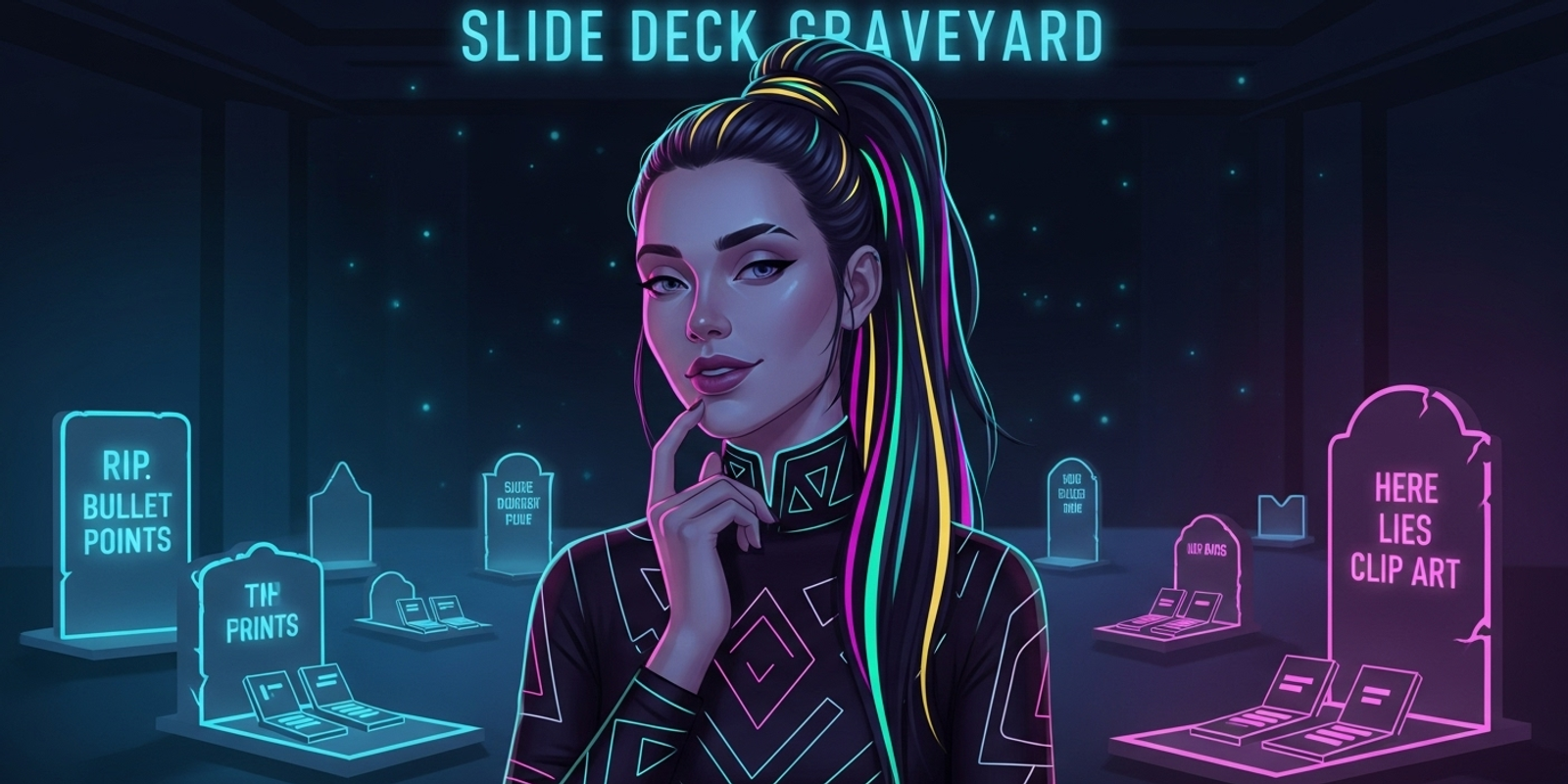Let’s have a talk. No, don’t look away. You’ve been summoned. I see you in those dimly lit rooms, a flickering projector casting your sins upon the wall for all to see. The text-crammed slides. The clip art from a bygone millennium. The charts so dense they could collapse into a black hole of incomprehension.
Your audience isn't listening, darling. They are mentally composing grocery lists, contemplating the futility of existence, or simply praying for the sweet release of the final slide. You are not communicating; you are committing a slow, agonizing act of informational torture.
You're lucky I'm here. Consider this an intervention. A tough-love guide to pulling your presentations back from the brink of digital oblivion.
🔥 Sin #1: The Slide-ument
The Affliction: You've mistaken your presentation for a document. You have paragraphs. Full, complete sentences. Your slides are a verbose wall of text that you proceed to read aloud, word for agonizing word, as if your audience is composed of illiterate toddlers.
The Tough Love: A slide is a billboard, not a novel. Its purpose is to provide a visual anchor for the words you are speaking. If your audience is reading, they are not listening. You have become redundant.
The Elixir: Embrace the sacred mantra: One idea per slide. Use keywords, not sentences. If you need to convey detailed information, that’s what a handout, an appendix, or a follow-up email is for. Your slides are for impact. Use the Notes section for your script; the slide itself is for the audience.
🎨 Sin #2: Default Template Atrocities
The Affliction: You opened PowerPoint and chose one of the built-in templates. The one with the swooshy green bar or the abstract blue polygons. You know the ones. They are the digital equivalent of corporate-issue, grey polyester trousers. Devoid of personality, style, or intent.
The Tough Love: Using a default template screams, "I invested the absolute minimum amount of thought and effort into this." It instantly devalues your message and brands you as an amateur.
The Elixir: Create a simple, clean master slide. It's not difficult. Choose two, maybe three, on-brand colors. Select a clean, readable headline font and a simple body font. Add your logo discreetly in a corner. That's it. You now have a custom, professional backdrop that supports your content instead of suffocating it.
📊 Sin #3: Data as a Bludgeon
The Affliction: You have a glorious, data-rich spreadsheet. In a moment of madness, you copy-paste a 50-row table directly onto a slide. Or worse, you insert one of Excel's default, multi-colored, grid-lined chart monstrosities. It's unreadable from three feet away and communicates absolutely nothing.
The Tough Love: Data is not a weapon to beat your audience into submission. It is a tool for illumination. Showing all the data is a rookie mistake. Your job is to guide them to the insight.
The Elixir: One chart, one point. What is the single most important message that chart should convey? A trend? A comparison? An outlier? Redesign the chart to tell that one story. Remove every non-essential element: borders, gridlines, 3D effects, unnecessary labels. Use color strategically to highlight the key data series. Title the slide with the conclusion, not the description (e.g., "Region 3 Outperformed All Others" instead of "Sales by Region, Q3").
🗺️ Sin #4: The Aimless Narrative
The Affliction: Your presentation is just a sequence of loosely related facts. Slide 1, here's a thing. Slide 2, here's another thing. Slide 3… oh look, a third thing. There is no flow, no argument, no story. It's a data dump with transitions.
The Tough Love: Humans are wired for story. A presentation without a narrative is just noise. You are failing to lead your audience from a point of departure to a destination.
The Elixir: Structure your presentation like a classic narrative:
- The Beginning (The Problem): Start with the status quo, the challenge, the question. Why are we here? What is the problem we need to solve?
- The Middle (The Journey): This is your analysis, your data, your solution. Guide the audience through your findings. Build your case, piece by piece.
- The End (The Resolution): Conclude with the key insight, the recommendation, the call to action. What should the audience think, feel, or do now that they have this information?
Stop creating presentations, darlings. Start architecting experiences. Banish the walls of text. Slay the default templates. Wield your data with purpose and build a narrative that commands attention. Now go, and sin no more.
